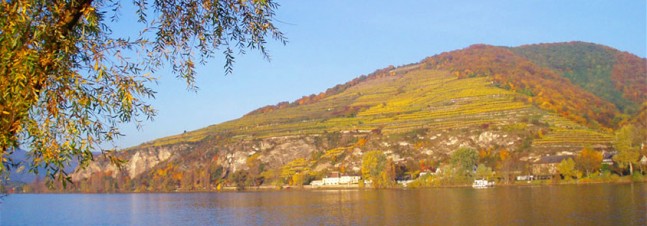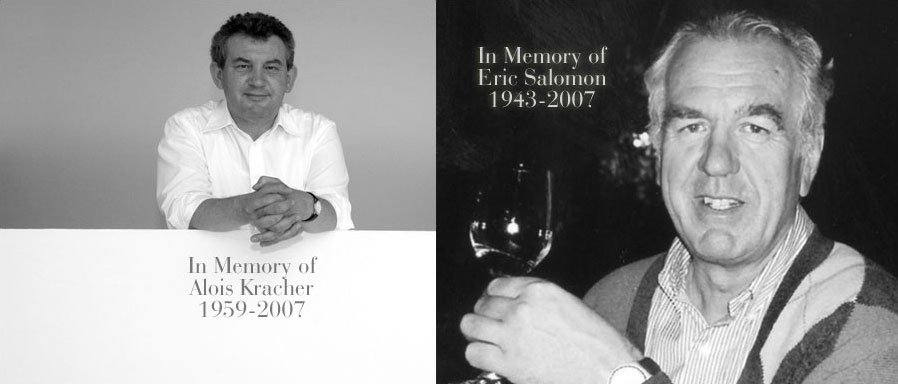 An Austrian wine is poised to leap to a wider acceptance. If you are looking for the best value for money in white wine, it is more than likely to have an unpronounceable name.
An Austrian wine is poised to leap to a wider acceptance. If you are looking for the best value for money in white wine, it is more than likely to have an unpronounceable name.
Easily misinterpreted as a tropical disease, or a robust German sausage and sauerkraut dish, Austria’s indigenous grape, gruner veltliner, is actually not that difficult to pronounce (groon-er vealt-lean-er) and bids fair to become more familiar as the wine’s popularity inevitably increases.
Its origins are a little uncertain though it can be traced back to medieval times in the northern part of lower Austria. The name veltliner comes from the village of Veltlin in the South Tyrol, and although the variety is no longer found there, Austria remains the only country where it is grown.
Out of 30 varieties of grape permitted for the production of quality wine(Pradikatswein) in Austria, gruner veltliner accounts for around 35 percent of all plantings. Surprisingly, the finest white grape in Austria, riesling, comes in at only 4 percent.
Before October 2002, Austria was best known on the international wine stage for its riesling and dessert wines, but all that changed with the blind taste-off between chardonnay and gruner veltliner at London’s Groucho Club.
A panel of England’s finest palates was assembled, including wine writers, educators and sommeliers, to judge a lineup of the finest examples of gruner veltliner and chardonnay from around the world. The selection was compiled by Jancis Robinson MW (Master of Wine), and wine dealer and collector Jan Erik Paulson.
The results were convincing, although astonishing, with first and second place going to 1990 Gruner Veltliner Vinothekfullung, Knoll, and 1997 Gruner Veltliner Ried Lamm, Brundlmayer. Five of the top seven wines were gruner veltliners.
Moreover, the unknown Austrians embarrassed such commanding chardonnays as 1996 Kistler Dutton Ranch, California, 2000 Domaine Leflaive Puligny Montrachet Clavoillons, Burgundy, and 1999 Petaluma Tiers, Australia.
News of the outcome spread quickly and before long every sommelier from London to Melbourne was an advocate of gruner veltliner. However, it did not appear on the radar screen in Hong Kong or most of Asia, perhaps due to the preference for red wines and a still evolving wine culture.
Supply is also an issue with only a few importers of Austrian wines in the region. That is unfortunate given that gruner veltliner screams out for Asian cuisine, particularly Thai.
When I was first introduced to the wine, I was quite amused by an American wine merchant’s description of it: “If sauvignon blanc and viognier could have a child, it would be gruner veltliner.”
In his roundabout way, he was describing its unique characters somewhere between the crisp and tangy structure of sauvignon blanc with the exotic aromas and flavors of viognier, which sounds like the perfect liaison.
In general, gruner veltliner is expressive in stone fruits and citrus with an intriguing signature whiff of white pepper. Flavors range from citrus, grapefruit and pomelo through to ripe melons, nectarines, white peaches and pears. It is always juicy and fruity with a backbone of lemon acidity and spicy lift.
There are similarities to Soave’s savory, bitternut finish – only gruner veltliner’s unique savory farewell is white pepper and an almost salty seasoning. The best vineyard sites have primary rock with topsoils of shale (schist) and fine sand (loess) and will have accentuated minerals, expressing the terroir.
The quality spectrum and styles of is wide-ranging from crisp, lively wines that are best drunk young, to age-worthy tour de forces that are comparable to top white Burgundy. Wines from the Wachau can be powerful in their youth – riper and higher alcohol – quite textural with glycerol-richness, sometimes accentuated by traces of botrytis.
Bordering the eastern part of the Wachau, the Kremstal region with its south-facing hills and terraces surrounding the twin towns Krems and Stein, benefits greatly from the reflective warmth of the Danube River.
The wines here tend to be more approachable – softer and more delicate in fruit, with subtle spice, wet stone- salty minerals and well-integrated acidity.
I can understand the richer, seductive Wachau wines appealing to the chardonnay drinker. However, I find this style too overbearing when young and prefer the subtler gruner veltliner from Krems.
Founded on wine a millennium ago when the monks who followed Charlemagne’s army down the Danube saw the potential of its south-facing terraces, Krems is one of the oldest wine centers in Austria.
An easy return day trip by boat from Vienna up the Danube, Krems’ romantic, narrow streets and its historically important buildings from the late Gothic, Renaissance and Baroque periods make it a fascinating place to visit.
 My favorite winery in Austria, Salomon-Undhof, is in the twin town of Stein, on the western border of Krems. The Salomons are a remarkable wine family, acquiring the Undhof around 1780, which was once the farm building of a Capuchin monastery, and have been producing wines since 1792.
My favorite winery in Austria, Salomon-Undhof, is in the twin town of Stein, on the western border of Krems. The Salomons are a remarkable wine family, acquiring the Undhof around 1780, which was once the farm building of a Capuchin monastery, and have been producing wines since 1792.
Fritz Salomon, who took over the estate from his father Franz and died in 1971, was one of the true pioneers of dry wines in Austria.
Now run by Bertold (Bert) Salomon, they remain one of the most progressive and quality-driven wineries in Austria today, making gruner veltliners of stunning purity and elegance.
You will not meet a more affable and jovial person than Bert Salomon. He does attempt to camouflage his obvious intellect, intense passion and encyclopedic understanding of the wine world under a humble nature and warm-hearted hospitality.
In his role of head of the Austrian Wine Marketing Board, it was Bert who introduced me to gruner veltliner on my first visit to Vienna. Some years later, he sent me a bottle of 1962 Salomon Wieden Gruner Veltliner for my 40th birthday. It was an amazingly complex wine that showed no signs of fading, unlike this writer!
All three individual vineyard gruner veltliners, Lindberg, Von Stein andWieden, that Salomon makes are excellent. However, it is the Wieden I enjoy the most and it is unbelievable value at HK$128 per bottle. It is a walled-in vineyard at the foot of the hills, with a layer of eroded schist, mixed with rivers and and loess on a bed of river pebbles. Vines average 20 to 40 years old.
Vintage 2004 is juicy and expressive in stone fruits and tangy Thai pomelo, it dances (Viennese waltz) across the palate. Rounded and textural with fresh ginger and white pepper spiciness, a tangy lemon acidity and peppery, salty, savory finish, it is absolutely delightful drinking, with or without food. I would not hesitate to purchase by the case, however you may want to consider a mixed dozen including some of Salomon’s outstanding dry rieslings.
Available from direct importer
Solar Max
solarmax@netvigator.com
Tel: 2554 1183 or try Oliver’s Delicatessen.
Further info: www.winesfromaustria.com and The Wines of Austria by Philip Blom, published by Faber and Faber.
This article was publish in The Standard Newspaper, Hong Kong. All Rights Reserved.
|
|
Tweet |






No comments to Mountain Fresh | Comments Feed
No comments yet
The comments are closed.